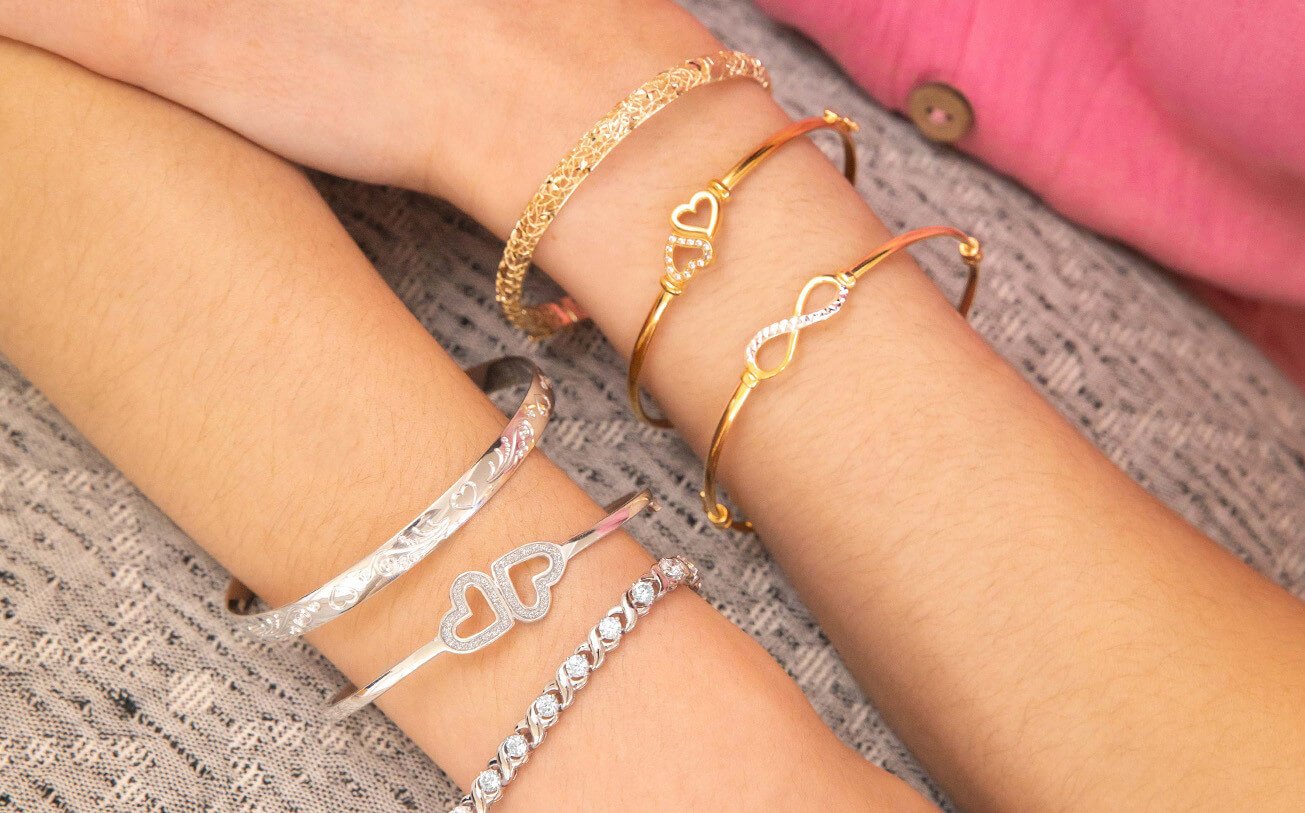Gold jewellery dates to 4,000 BC and has since made a permanent impact on the world. As one of the top-selling types of jewellery, it’s common knowledge that gold jewellery simply works with any outfit. Despite the universal popularity of gold jewellery, some people are unfamiliar with different gold purities and their uses. Read on as we uncover all things gold purities!
Table of Contents
What is Gold Purity?
Gold purity refers to the amount of pure gold present in the gold item compared to other alloys. Gold jewellery consists of varying gold values. Since pure gold is considered too soft to employ in jewellery, most solid gold jewellery is made from alloys - mixtures of metals. Gold purity is a crucial factor that determines the price, appearance and durability of gold jewellery. The more gold purity, the more expensive the jewellery typically is.
What is A carat in Gold?
Karat is a measure of the purity of gold in jewellery. As you may have noticed, carats are recorded with various numbers (24ct, 12ct ,18ct). These numbers signify a fractional measure of purity for gold. For example, 16-carat gold contains 16 parts gold and 8 parts alloying metal. Alloying metal is a mix of metals used to maintain the jewellery’s strength.

How Is Gold Measured?
The measurement of gold contains two main methods: weight and purity.
The weight of gold is measured in troy ounces (1 troy ounce = 31.1034768 grams). Troy ounces have been used for centuries to maintain consistent calculations for gold. There are 12 troy ounces in every troy pound and 16 ounces in every avoirdupois pound. This method of measuring gold weight helps to ensure that customers are given exactly what they pay for.
Gold purity, as mentioned above, is measured in ‘carats’. Also spelled ‘carats’ within the United States, this system helps to measure the fraction of pure gold compared to mixed metals (alloyed metals). You may hear the term “24-carat gold” in various songs, like Bruno Mars' '24ct Magic'. This is because 24-carat gold is made entirely of pure gold, meaning that it is highly valuable! One carat is 1/24 part of pure gold, so 16 carat gold would contain exactly two-thirds of pure gold.
Gold carats Characteristics & Uses
24ct
24ct gold is the purest form of gold jewellery, containing 99.999% pure gold and 0.01% other metals. As the purest form of gold, 24ct gold is hypoallergic and resistant to tarnishing. This form of gold often displays a rich yellow colour, often associated with luxury.
22ct
22ct gold contains 91.67% gold and only contains 2 parts other metals, making it very durable and rich. Its higher metal content makes this type of gold more resistant to scratches and wear. This form of gold is not as hypoallergic as 24ct gold.
18ct
18ct gold is 75% gold, containing six parts of other metals including silver, copper and zinc. This gold form is great for everyday wear, still offering durability and resistance to scratches. This form of gold is popular for gold wedding rings.
14ct
14ct gold contains 58.3% gold and contains a decent mixture of other metals. This type of gold is generally less expensive, radiating a paler yellow colour. This type of gold is still durable, making it great for everyday wear.
10ct
10ct gold contains 41.7% gold and 58.3% alloy. This type of gold is vulnerable to tarnish, so it does require careful handling and more maintenance. This type of gold, as you may guess, is the cheapest. Radiating a paler tone, this type of gold is commonly used in simple and dainty jewellery

What Are the Different Gold Colours
Gold jewellery is available in various gold colours, meaning that you buy the perfect piece of gold jewellery to suit your style.
Yellow Gold
Yellow gold jewellery is made from an alloy containing silver or copper. These metals give yellow gold jewellery their warm colour when mixed with other metals such as nickel or zinc. This type of gold is durable, great for sensitive skin, and does not tarnish - ideal for everyday wear. Yellow gold shares a similar value to white gold and rose gold. The only main difference would be determined by the percentage of pure gold.
White Gold
White gold is made by a combination of pure gold with naturally white metals. White gold jewellery typically contains 18 carats, making it a durable type of jewellery. White gold has a silver or yellow cast, depending on the ratios of metals mixed. For example, a white gold ring with an alloy with more copper will result in a slightly pink cast. White gold wedding rings and white gold engagement rings are among the most popular types of white gold jewellery.
Rose Gold
Rose gold contains a mix of silver, copper and gold, radiating a soft pink hue. Rose gold jewellery is made of real gold, even if it isn’t 100% gold. Rose gold does not tarnish but rather appears darker over time. Rose gold engagement rings are a popular jewellery choice, with rose gold wedding rings being a huge trend.
Comparing Gold Purities: Which One is Right for You?
It is essential to consider the purity of your gold jewellery before purchase. Firstly, the purity of gold in the jewellery determines the price. For example, 24ct gold is high in value, meaning that it is more expensive than 16K gold, which contains less pure gold. Consider your budget and pick the gold purity most suited to your ideal price. Gold purity contributes largely to the appearance of the jewellery. The purer the jewellery, the deeper and richer the colour. Additionally, the durability of your jewellery depends on its purity. 24ct gold is easy to bend despite being extremely durable, so if you're looking for a gold engagement ring, it's better to purchase one with a slightly lower gold purity. For optimal durability, 10ct gold is recommended.

Conclusion
The purity of gold jewellery can impact the overall wearing experience, meaning that it is important to understand the different gold purities and types of gold in jewellery. Now that you know all things gold purity, carats, gold measurements and gold characteristics, you’re officially a pro gold jewellery shopper! Shiels offers a range of gold jewellery in unique colours and various purities, ensuring the perfect wear for everyone.












